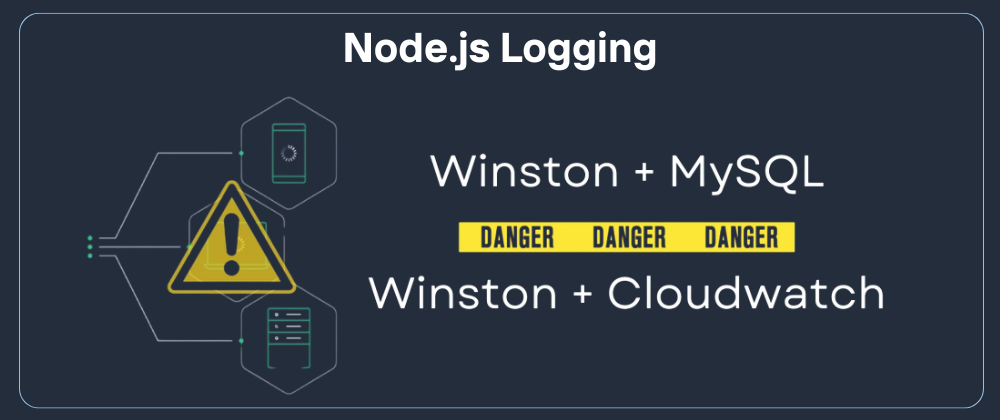Now Reading: Paid Logging Slowed Down My Node.js App—Here’s What Worked Better
-
01
Paid Logging Slowed Down My Node.js App—Here’s What Worked Better
Paid Logging Slowed Down My Node.js App—Here’s What Worked Better

I’ve been on a journey—one that started with a simple idea: build a free open-source Node.js logger. (No, I’m not going to name it because this isn’t a promotional story—just an honest one.)
I tested many logging tools—both open-source and paid. Each had its pluses and minuses, but let me share my experience with one paid service: Better Stack.
It’s not just about Better Stack. It’s about many paid logging services.
The results of Better Stack vs Open-source logging services:
Better Stack (HTTP endpoint): ~110k requests/min
Open-source (LocalDB): ~300k requests/minWhy this performance discrepancy happens and why a paid logging service that relies on HTTP/HTTPS can bring your system’s throughput down.
Paid Logging Services and Their Drawbacks
Paid logging services often provide many other services with logging services. But if you into only logging service feature then this may help you to decide what to chose between paid service / open source logger.
Take Better Stack’s logging feature, for instance. In a recent performance test, using winston-betterstack to ship logs to Better Stack’s remote endpoint yielded only around 110k requests/min throughput. This performance is notably lower than many self‑hosted or local logging setups, which often reach upwards of 300k requests/min.

So, why the discrepancy?
- HTTP/HTTPS Overhead: Logging to a remote service requires creating outbound HTTP requests for every log entry. This is inherently slower than writing directly to a local or same‑network database, where you can use efficient protocols and avoid extra layers of latency.
- Extra Network Hops: Sending logs across the internet means more points of failure and potential congestion. You rely on your connection stability, the remote provider’s ingestion pipeline, and everything in between.
- Rate Limiting & Throttling: Paid logging services often enforce ingestion or rate limits to protect their shared infrastructure. During traffic spikes, you risk losing critical logs or facing significant ingestion delays. For example, if you push logs via pino-betterstack at high volumes, you might suddenly hit throttling thresholds—and lose logs right when you need them the most.
- Added Cost: Beyond slower performance, you’re also locked into monthly fees or usage‑based billing. If your application scales, you may find that your logging bills become larger and less predictable.
In short, paid services that rely on remote endpoints inherently add latency and can limit throughput. Plus, they’re multi-tenant, so you share resources and bandwidth with countless other users. All it takes is one usage surge—yours or another tenant’s—to stall or throttle your logs.
The Benefits of Open-Source Logging Solutions
If the drawbacks of paid services concern you, the good news is that open-source and self-hosted alternatives can address most of these pain points. Whether you’re storing logs in MySQL, Postgres, or even using the ELK stack (Elasticsearch, Logstash, and Kibana), open-source systems put you in control.

Here’s why that’s a game-changer:
- Faster and More Direct
- When you log to a locally hosted or network‑close database, you bypass the overhead of HTTP requests and external networks. In many cases, the data flows directly through a binary protocol (e.g., MySQL’s native protocol), significantly reducing latency.
- Typical throughput comparisons can show 300k+ requests/min on self‑hosted systems, which outperforms remote logging to Better Stack or similar paid providers.
- Full Control Over the Pipeline
- With open-source tools, you control your hardware, network settings, and data storage configurations. You can tune MySQL, for instance, to optimize write performance or replicate data across multiple nodes without third‑party constraints.
- No arbitrary rate limits or forced throttling. You can choose to scale horizontally, add caching layers, or adjust ingestion queues according to your application’s needs.
- Cost‑Effectiveness
- Open‑source solutions are free to use—your main costs are infrastructure and time. That can lead to significant savings once you pass a certain scale, especially if you’re using existing servers or shared resources.
- You won’t be blindsided by usage‑based pricing or sudden overage fees.
- Avoid Vendor Lock-In
- Proprietary platforms make it harder to switch providers because your logs and integrations live behind their paywall. In contrast, open-source solutions store your data in standard formats you control. If you need to migrate or pivot, you can do so without being chained to a provider’s platform.
- Community-Driven Development
- Open-source projects benefit from a community of contributors who actively improve performance, fix bugs, and release new features. As a user, you can file issues, submit pull requests, or just benefit from the collective expertise of a global user base.
In summary, open-source logging solutions give you the freedom to manage your logs at scale without worrying about throttling, arbitrary limits, or hidden fees. While paid services might be convenient for smaller shops or teams that need quick deployment and can tolerate lower throughput, high‑performance applications will likely find more reliability, control, and cost‑savings in open-source, self‑hosted setups.
Final Word
Paid logging services can provide a slick user experience—but if you value raw performance, cost control, and having complete ownership over your logs, they often fall short. As shown in our comparison with Better Stack, relying on an external HTTP endpoint can cap your throughput significantly and impose usage or rate limits that lead to dropped logs.
Open-source solutions, on the other hand, empower you with direct control over your infrastructure, letting you optimize for both speed and reliability. For teams that prioritize performance, scalability, and cost‑savings, self‑hosting is often the superior choice—and it avoids the headaches and constraints imposed by remote, multi-tenant providers.
I know—setting up open-source or self-hosted solutions can be a hassle, while paid services are often simpler. Many open-source loggers require a complicated setup and some tech know-how. That’s why I built a Node.js logger that can be up and running in under a minute—so easy even an intern can do it!
Also, there are lots of open-source logging tools out there. Some are old and solid, others are new with great speed and simple setup. There’s no absolute “best” or “worst” option—it really depends on what you need for your project.




